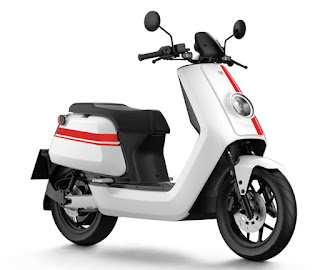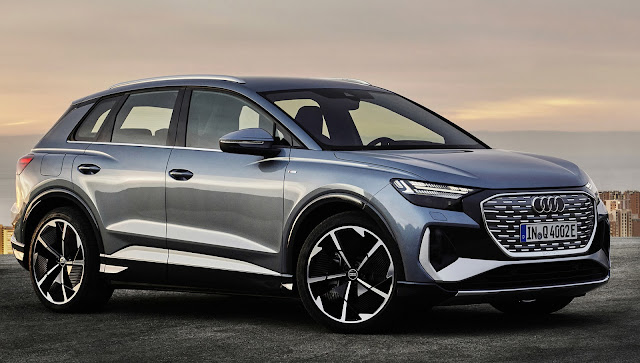The Silent Revolution: Understanding the Role of EV Suspension in Enhancing Driving Experience
Electric vehicles are steadily gaining traction for their environmental benefits, reduced maintenance costs, and lucrative tax incentives. Despite their rising popularity, EVs face unique challenges that impact their performance and the overall driving experience. Among these is the suspension system, a critical component that ensures a seamless and comfortable ride.
Demystifying Suspension: What is it and Why Does it Matter?
In simple terms, the suspension is a complex system that includes springs, shock absorbers, and linkages connecting the wheels to the vehicle's body. It primarily serves two purposes: supporting the vehicle's weight and cushioning the impact from road imperfections such as bumps, potholes, and turns.
A well-designed EV suspension system can greatly enhance a vehicle's handling, stability, and safety. It also plays a crucial role in reducing noise, vibration, and harshness (NVH) experienced within the cabin. This aspect is particularly significant for EVs, which are substantially quieter than traditional vehicles with internal combustion engines (ICEs). Given the absence of engine noise to drown out the road noise, EVs must have superior suspension systems to effectively minimize NVH levels.
How Does EV Suspension Differ from ICE Suspension?
Electric vehicles exhibit specific characteristics that distinguish their suspension system from that of ICE vehicles. These include:
- Weight Distribution: Electric vehicles (EVs) often have a lower center of gravity and a more evenly distributed weight compared to internal combustion engine (ICE) vehicles. This is due to the placement of battery packs—commonly installed on the floor or beneath the seats. The result is a reduction in body roll and enhanced cornering ability. However, this setup also amplifies the unsprung mass, referring to the part of the vehicle's weight not supported by the suspension. An increased unsprung mass may compromise the suspension system's responsiveness and comfort.
- Regenerative Braking: EVs utilize regenerative braking to recover kinetic energy that would typically dissipate as heat, minimizing the need for mechanical braking and prolonging battery life. Nonetheless, altering the load transfer and braking torque distribution between the vehicle’s front and rear wheels can impact the suspension system, potentially leading to uneven tire wear and decreased traction.
- Driving Modes: Electric vehicles (EVs) often come with various driving modes, such as eco, sport, or comfort. Each mode modifies the vehicle's performance and efficiency. They also influence the suspension system by altering the stiffness, damping, or height of the springs and shock absorbers. For instance, the sport mode stiffens and lowers the suspension to enhance the vehicle's handling and aerodynamics. On the other hand, the comfort mode softens and raises the suspension to enhance ride quality and clearance.
Emerging Technologies for EV Suspension Systems
Addressing these challenges and optimizing EVs' performance and comfort have led to the development and research of several technologies for EV suspension systems. These include:
- Active Suspension: This suspension system type can adjust its parameters in real-time based on road conditions, vehicle speed, and driver input. Active suspension employs sensors, actuators, controllers, and algorithms to independently manage each wheel's force or displacement. Consequently, it enhances the handling, stability, comfort, and noise, vibration, and harshness (NVH) of EVs by minimizing body roll, pitch, yaw, bounce, and vibration.
- Regenerative Suspension: This suspension type harvests some of the energy typically wasted as heat by shock absorbers. It employs either linear generators or hydraulic pumps to convert the wheels' vertical motion into electrical or hydraulic energy. This energy is then stored in batteries or accumulators to power other vehicle systems or aid in propulsion. By recovering energy usually lost during driving, regenerative suspension enhances the range and efficiency of electric vehicles (EVs).
- Air Suspension: This suspension system uses air springs instead of traditional metal springs to support the vehicle's weight. Air springs are flexible rubber bags filled with compressed air. The system uses valves, compressors, reservoirs, and sensors to control the air pressure in each air spring based on the load and road conditions. Consequently, air suspension improves the comfort, noise, vibration, and harshness (NVH), and adaptability of EVs by ensuring a smoother, quieter, and more customizable ride.
Conclusion
The Importance of Suspension for Electric Vehicles
Suspension is a fundamental aspect of any vehicle, and this is particularly true for electric vehicles (EVs) due to their distinct characteristics and needs. Unlike Internal Combustion Engine (ICE) vehicles, EVs demand a suspension system that can manage their unique weight distribution, accommodate regenerative braking, and support various drive modes with the aim of boosting their performance, comfort, and efficiency.
Several technological advancements, such as active suspension, regenerative suspension, and air suspension, are either already implemented or being actively developed for EVs. Through the integration of these advanced technologies, EVs are capable of delivering a serene yet seamless driving experience that can compete with or even exceed that of traditional ICE vehicles. @via Impact of EV Suspension on Driving.










